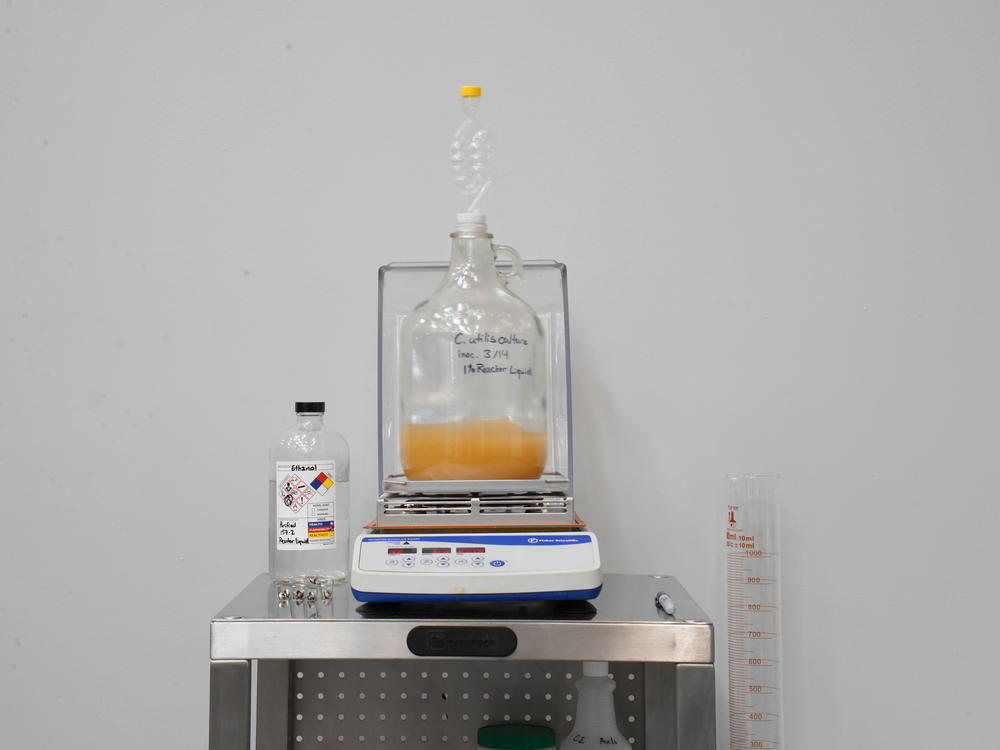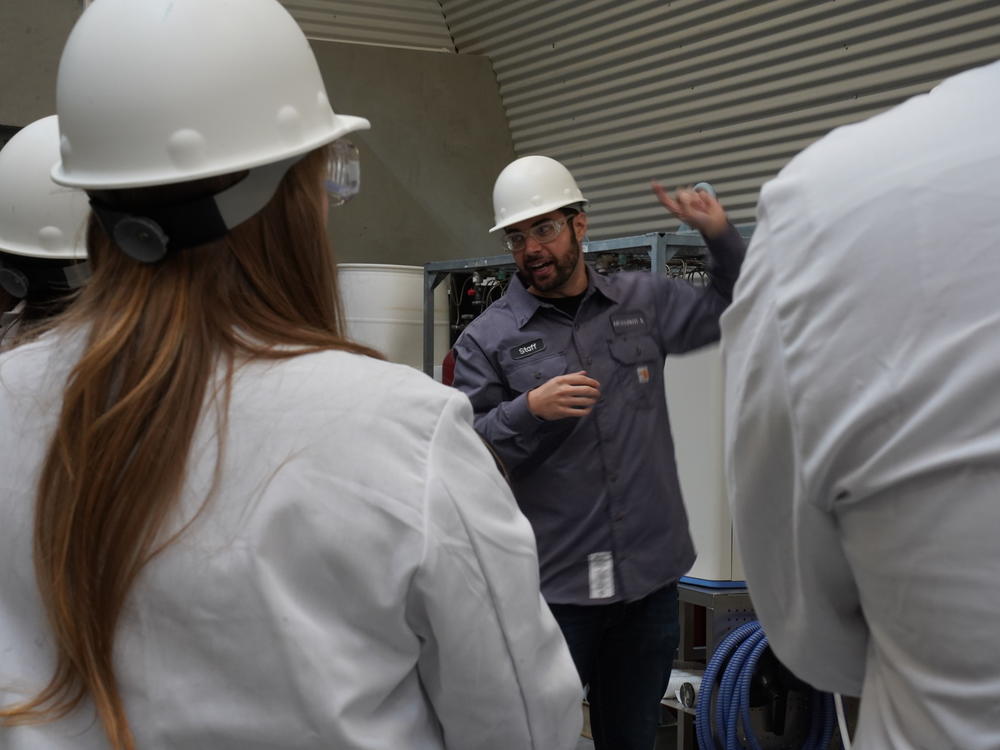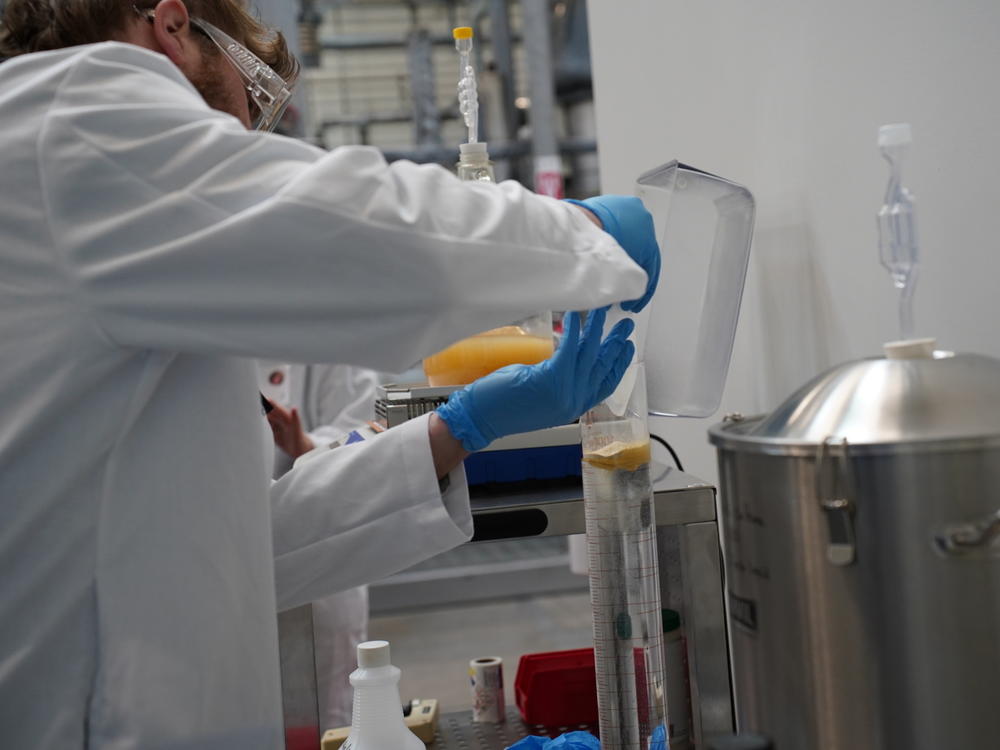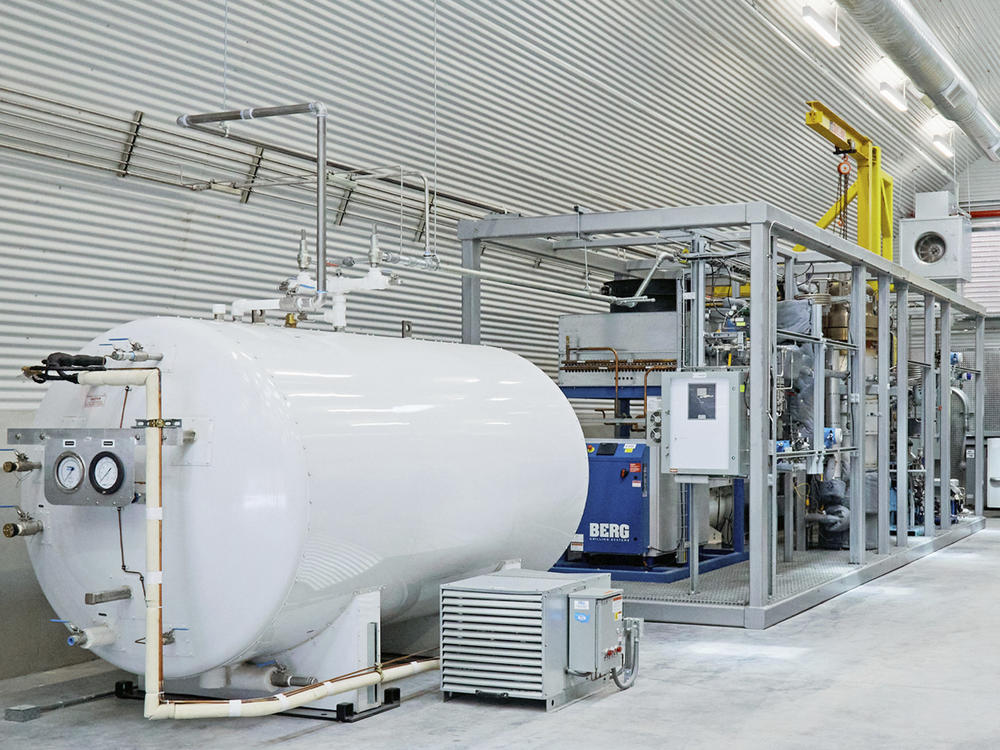Section Branding
Header Content
The special ingredient for Mars travel meal prep? Astronaut breath
Primary Content
The ingredients for space yeast are fairly simple.
"Astronaut breath, water, yeast starter, electricity, a rolling pin and we can make it happen," Stafford Sheehan, a finalist in the NASA-sponsored Deep Space Food Challenge, told NPR.
Put air, water and yeast starter into Sheehan's handy machine, wait about two hours and voila: a protein shake textured-yeast that can be dried and rolled into pasta or tortillas. (This is where the rolling pin comes in.)
Back in 2017, Sheehan invented a process that can turn carbon dioxide into alcohol, which can then be turned into vodka, perfume and yeast. His company, Air Company, which he founded with his friend Gregory Constantine, is now in the third and final phase of the international contest to create novel, game-changing food technologies for long-term space missions.
The food products have to require little resources and produce little waste, while being safe to eat, nutritious and tasty.
The goal is two-pronged: These edible innovations could help make the exploration to Mars and deep space more feasible. They can also offer new, more sustainable, avenues to feed people here on Earth.
The competition is in collaboration with the Canadian Space Agency. Along with Air Company, seven other teams have advanced to the final round, where they will compete for up to $1.5 million.
Among the other finalists are Florida-based Interstellar Lab, which created a bioregenerative system to produce fresh vegetables, mushrooms and insects. And Colorado-based SATED developed a cooking appliance that prepares meals from ingredients with long shelf lives.
Like a futuristic plant that can create tortillas in a few steps
To understand how Sheehan's process works, let's start with carbon dioxide — the stuff we breathe out.
Plants breathe in carbon dioxide. When plants take in a combination of carbon dioxide, sunlight and water, they are able to produce sugar and oxygen. This process is called photosynthesis.
These same elements that make sugar can also form alcohol. And when yeast starter eats alcohol, it makes a lot more yeast. (Are you following?) Essentially, Air Company found a way to copy what plants do — using astronaut's breath — so that they can make edible nutritional yeast.
"We do the same chemistry that plants do, except we do it much more efficiently," Sheehan said.
With nutritional yeast, a hungry astronaut can form pasta, tortillas and seitan, a popular protein source for vegans. Sheehan described the flavor as "like wheat gluten, but a little bit sweeter."
Meal prepping for a trip into deep space is not easy
So, why does space food matter? One word: Mars.
Right now, scientists have figured out a lot of the logistics regarding a journey to the red planet, except how to bring enough food.
At best, it would take seven months to get to Mars. To pack over a year's worth of food for the round trip (with extra snacks, of course) would be immensely heavy — too heavy for a rocket.
"The things that we don't know how to do is get enough stuff up into the pathway between Earth and Mars to sustain people for a trip," Sheehan said.
The contestants of the Deep Space Food Challenge look to answer that question, and make the long-awaited mission to Mars more feasible.
A second important mission: fight climate change
Developing space food can also have profound impacts on Earth.
Right now, space food requires a lot of money to develop. But Sheehan said that doesn't have to be the case in the future. He compared it to solar energy, which also has origins in space innovation. Solar panels were once incredibly expensive, but now, they are affordable, ubiquitous and a tool to fight climate change.
Sheehan's hope is that the same will happen for the products made at Air Company. Not only can his company make yeast from carbon dioxide, but it can produce sustainable aviation fuel, he said.
"If we're able to produce fuel from carbon dioxide in the air, rather than having to dig for fossil fuels, that really helps to stop climate change," he said.
By not relying on fossil fuels, Sheehan also envisions his product can help people become more energy independent.
"Once we get to the same scale as the fossil fuel industry, then we can make it for prices that are closer to the cost that you get fossil fuels at," he said. "The work we do with NASA is to help make that possible."
Copyright 2023 NPR. To see more, visit https://www.npr.org.




